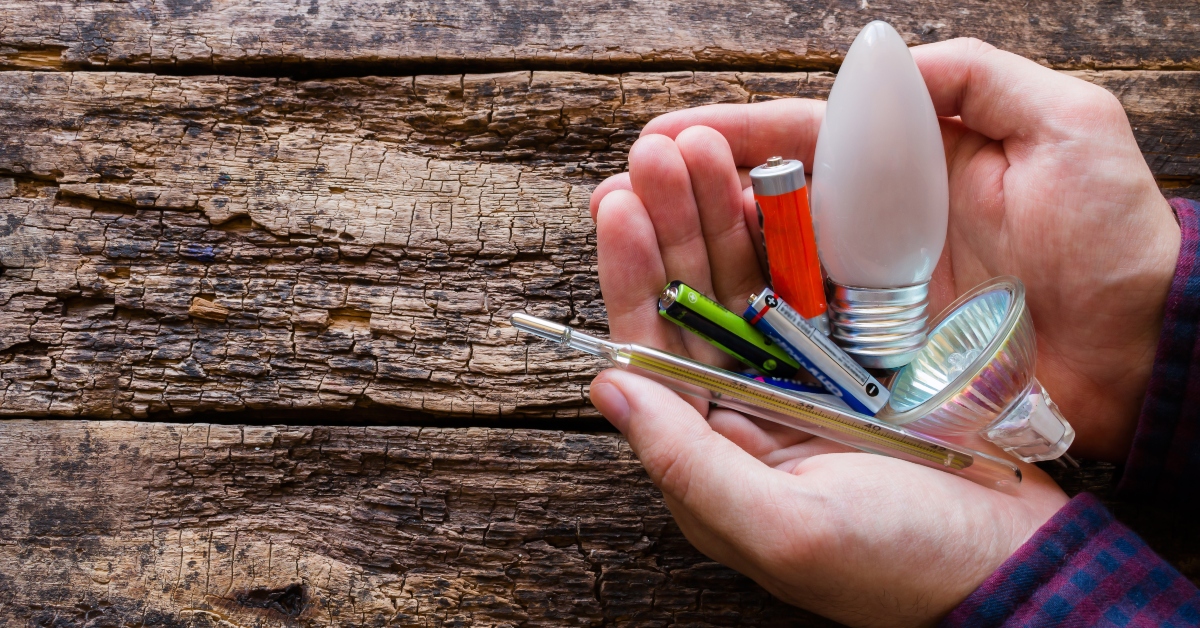11 hazardous household waste items – and what to do with them!
13 February 2020 by CSG

What is hazardous waste – it can be defined as any substance that could cause damage to our health or our environment, for example, items that may easily ignite or are flammable, are toxic and poisonous, could explode or be corrosive.
It is easy to think that hazardous waste is stacks of IBCs and drums, in a corner of a factory in an old industrial estate. However, hazardous materials and therefore waste are much more common than you might think, and you might actually have some hazardous waste in your own house.
Because hazardous waste could be harmful to other humans, animals or our environment it is important to ensure that it is disposed of safely so that a hazardous waste facility can treat the substance so that it is no longer harmful to the environment.
1. Waste Electrical and Electronic Equipment
With the rise of cheaper electronic and electrical products like computer monitors, mobile phones and TV: s it is hard to resist an upgrade. However, discarding the old equipment correctly is important to prevent heavy metals, like lead and cadmium and an array of nasty chemicals, to contaminate landfills, waterways and the environment. Check with your local council for recommendations and advice on how and where to dispose of electrical waste.
2. Thermometers and Thermostats
Do you remember being taught about hazardous metals in chemistry class? I certainly remember my teacher telling me that the very dangerous metal mercury had been heavily used in thermometers and thermostats, which horrified me because I believed my entire family were in danger if we had one at home. While mercury thermometers and thermostats have now been phased out, there is a chance you could still have an old one in your house. Before you throw one in the bin your local council offer recommendations on how to handle and dispose of these items.
3. Old Medications
Most medications become ineffective after its expiration date and should, therefore, be disposed of, but don’t toss the medication in the bin or flush it down the drains. Unsafe disposal of old medication can be harmful to the environment and animals. You can return old or unused medications at any pharmacy and they will dispose of the medicine safely, for you. This also includes old inhalers.
4. Paints, Wood Stains and Varnishes
Have you recently re-decorated your dining room? Most paint, wood stains and varnishes are very flammable, and any residue left on rags or in paint containers could easily combust if they do not completely harden before disposal. Leave the lid open until the pain become solid and dry, or speed the process up by adding a bit of sawdust, sand or soil to the mixture. When you are sure that the residue is completely dry you can take it to your local waste recycling centre. However, if you have solvent-based paints, paint thinner or white spirits, it should be disposed of at a hazardous waste facility.
5. Gas Cylinders
Gas cylinders are usually used to power camp stoves and some outdoor heaters. The cylinders are recyclable, but before being put in the recycling bin the gas must be emptied, which can be done by puncturing the cylinder with a nail or screwdriver. Alternatively, you can take it to your local recycling centre, and they will sort it for you.
6. Automotive Fluids
Have you got the skills to change your cars oil, antifreeze and other fluids by yourself? If so, you must capture all the old liquids (in separate plastic containers with lids) as they are hazardous and could contaminate soil, waterways and be harmful animals. If you take the plastic containers to your local auto repair shop, they will take care of the liquids for a small fee.
7. Garden Chemicals
Garden chemicals or pesticides are very hazardous waste, even if you have only used it in your garden. Do not pour pesticides or any other garden chemical down drains, sinks, toilets or waterways. Instead, check with your local council on how to dispose of it safely.
8. Tyres
Many landfills have banned old, worn-out tyres simply because they take up a lot of space and isn’t biodegradable. There is also a great risk that they will set on fire, which would release a lot of chemical toxins in the air. If you need to get rid of your old tyres, check with your local council to see where you can dispose of them safely.
9. Adhesives
Adhesives and glue used in household DIY-projects often contain solvents that are harmful to the environment. Like with paint residue, adhesives are highly flammable and could start fires if not disposed of correctly. Luckily many of these adhesives have disposal instructions on their product packaging for you to follow.
10. Nail Polish Remover
Nail polish remover is a common item found in most households, which is a hazardous substance because it contains acetone, a highly flammable chemical. In an attempt to prevent fires, cotton balls and swabs with nail polish remover on should be dry and once empty, the bottle should be placed in a separate plastic bag, before being put in the bin.
11. Light Bulbs
While halogen and incandescent lightbulbs are allowed in a regular bin (but not in glass recycling), other lightbulbs like compact fluorescent (CFL), high-intensity discharge (HID) and low emitting diode (LED) are considered hazardous. These lightbulbs are accepted at most larger recycling centres, but some stores also let you return them.
